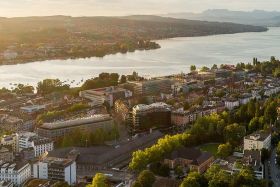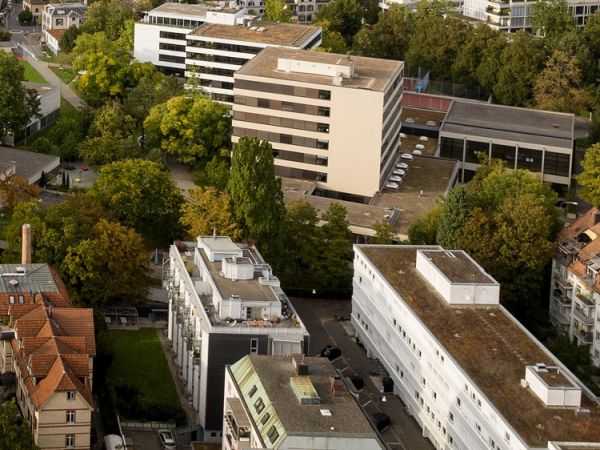
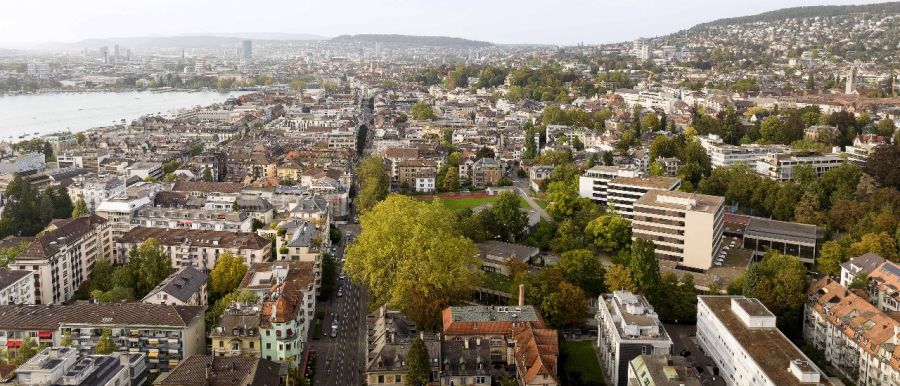
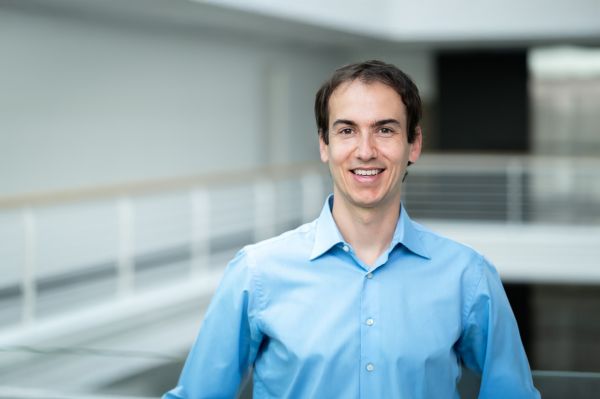
1. Why is Seefeld particularly well suited for using water from the lake?
As Seefeld is a densely built-up area and can be supplied using relatively short pipelines, it is ideally suited for using water from the lake.
The needs of users vary greatly within the developed area, so the network is divided into two zones.
- The Klausstrasse section has many commercial properties that need to be cooled in the summer. In addition to heating, the network also supplies cooling.
- The section further out of town, however, is characterised by residential buildings, including the Hornbach urban housing development with 125 apartments. This part is supplied exclusively with low CO₂ heat.
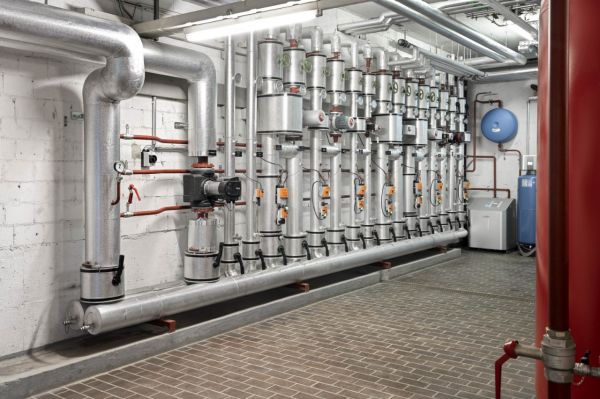
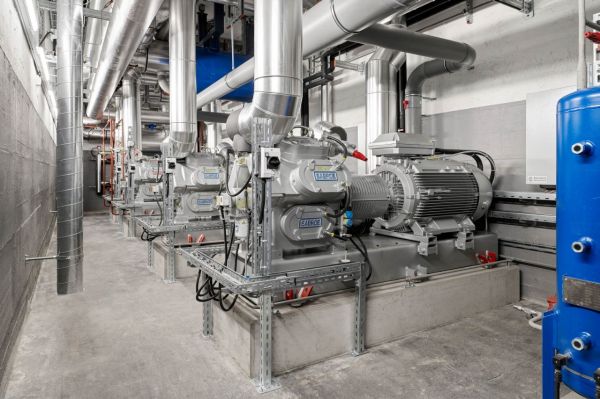

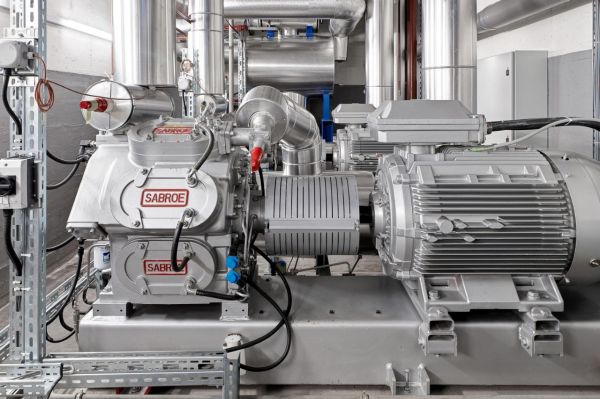
2. How does the heating and cooling system work?
The lake water is collected about 100 m from the shore at a depth of 15 m and fed into the central lake water system at Klausstrasse. Here, heat is extracted from it before the chemically unchanged water flows back into the lake.
The central lake water system is connected via an intermediate circuit with the Riesbach energy centre, which is located in the basement of the EB Zurich cantonal school of vocational education and training and will be operational in summer 2024.
Two large heat pumps powered by 100 per cent renewable electricity will be installed on completion and will heat the water to 74 °C. The heat is supplied to connected properties via a district heating network. There, it is transmitted via transfer stations to the distribution systems of the buildings.
In the Klausstrasse section, the heating and cooling supply works slightly differently: water at a temperature of between 5 and 14 °C enters the buildings via the intermediate circuit, also known as the anergy line, from the central lake water system. The heat pumps installed there raise the temperature to the level required for heating.
The buildings are cooled according to the principle of free cooling, also known as passive cooling. In summer, water at a temperature of between 16 and 18 °C absorbs excess heat from the cooling systems of the buildings via a heat exchanger and returns it to the intermediate circuit. As a rule, this is done without running the heat pump. However, if the temperature of the lake water is too high to absorb the indoor heat, the heat pump is used for active cooling. Since it is powered by renewable electricity, sustainable cooling is also possible.
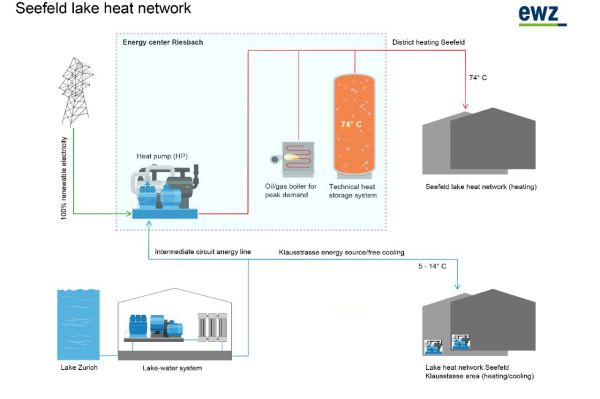
3. What is special about connecting the properties?
The connection of the properties in the Seefeld and Klausstrasse network area is linked to the construction of a comprehensive infrastructure. The first priority is to have as little impact as possible on residents, pedestrians and car traffic.
In addition, we are not relying on conventional trench construction but, where necessary, are using a special underground structure with wash boreholes, e.g. along Höschgasse in the area of the Seefeldstrasse crossing with the tram tracks. A special horizontal drilling rig that crosses under the road by means of trenchless drivage is being used. The people in charge are endeavouring to ensure that the noisiest work is carried out at times when it is least likely to cause a disturbance. Particularly during the construction of the energy centre in the basement of the school building of the EB Zurich cantonal school of vocational education and training, the installation and dismantling work was well coordinated with school management.
